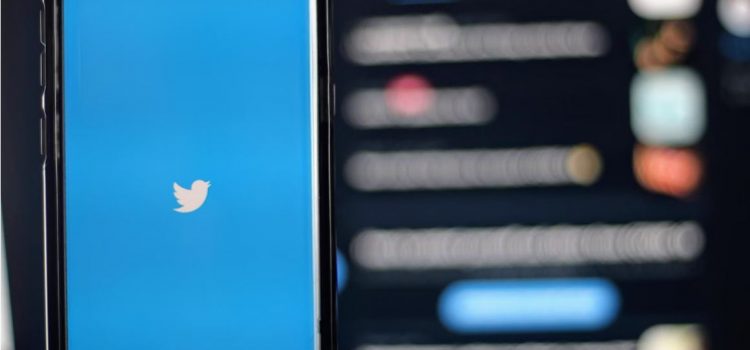
Who founded Twitter? Why were there so many power struggles? What changes and influences has Twitter had over the years?
In the book Hatching Twitter by Nick Bilton, he explores the timeline of Twitter—from conception to success (before Musk’s takeover). Twitter’s history is full of deception, greed, and the fight for power.
Here’s a brief overview of the book Hatching Twitter.
The Birth of Twitter
Hatching Twitter by Nick Bilton starts by diving into the early days of a small team from a budding startup with a vision for a service that would change the way we connect.
Twitter’s Roots in Odeo
In a defining moment, Odeo inadvertently laid the groundwork for what would become Twitter as it explored various strategic directions.
Noah Glass: The Unsung Hero
Noah Glass, an entrepreneur facing personal and professional challenges, played a crucial role in the significant growth of Odeo. Evan Williams, known for his innovative work on Blogger, connected with Glass through their adjacent balconies and invested $200,000, driving the expansion of the podcasting startup housed in a small apartment, with the condition that he would assume the role of CEO.
The Collective Creation of Twitter’s Core Concept
Initially focused on podcasting, the company shifted its attention to messaging, inspired by Glass’s determination to fight loneliness and Dorsey’s understanding of communication network dynamics, while integrating audio with text messaging capabilities. This fusion of personal passions and practical approaches gave birth to “Twttr.” The engineers, including Rabble, with their strong technical skills and hacker mindset, were committed to making Odeo the go-to platform for podcast distribution.
Regular brainstorming sessions at Williams’ residence sparked the creation of the globally recognized social media giant, Twitter. Biz Stone, along with his colleagues Jeremy LaTrasse and Tim Roberts, was instrumental in shaping the technical and visual elements of the project, with “hack days” serving as a key catalyst for their efforts. Dorsey, supported by Florian Weber and encouraged by Dom Sagolla, transformed the initial ideas into a functional platform, applying a systematic approach to the social networking concept originally envisioned by Glass.
Jack Dorsey’s approach was grounded in practicality; the limitation of short messages aligned with the prevailing SMS standards at the time; guided by Williams’ mentorship, a platform initially designed for sharing one’s current activities evolved into a network that ironically linked solitary introspection with social interaction.
Twitter’s Rise as an Independent Entity
After becoming a standalone company, Twitter quickly evolved from a small project into a major cultural phenomenon.
Twitter’s Rapid Growth in Users and Public Interest
The South by Southwest event witnessed a surge in excitement for Twitter, driven by captivating plasma displays and the evident emergence of a new social trend. Jack’s first tweet on the platform was a subtle indication of the imminent explosion in daily sign-ups, which would soon reach hundreds of thousands. The showcase of Twitter during the conferences led to a significant increase in user engagement, highlighting its obvious potential.
Challenges with Platform Stability and Scalability
However, hypergrowth brought instability. The platform, initially built on a simple Ruby on Rails framework, struggled to handle the growing volume of user interactions, resembling a hastily built skyscraper, despite being developed in just two weeks. The engineering team often grappled with numerous alerts signaling system failures, represented by the “Fail Whale” icon, and constantly faced the risk of a database crash that could result in the loss of all data.
In an environment conducive to innovation and committed to change, Twitter emerged—imperfect but fueled by passion, embodying the spirit of collaborative creativity and the ongoing pursuit of interaction and dialogue.
The Complex Dynamics and Power Struggles Among the Four Co-Founders
The intricate relationships and battles for control within Twitter’s founding team highlight the interplay of personal connections, aspirations, and differing viewpoints.
Noah Glass and the Strained Relationships with Other Founders
During Twitter’s early development, Noah Glass played a significant role, contributing to various aspects such as the logo’s creation and overseeing product development. His contributions were often eclipsed by more vocal colleagues, and he found himself particularly at odds with Ev. Tensions escalated as Noah attempted to undermine Ev’s position, culminating in a bold confrontation in front of all the employees. Jack Dorsey, despite being instrumental in Noah’s ouster, publicly expressed surprise to those around him.
Noah felt deeply betrayed, his frustration and sense of being left out were amplified when the terms of his departure were determined without acknowledging his role in Twitter’s growing success. After leaving the company, Noah experienced a feeling of being erased from the story he had helped shape.
Noah’s Overlooked Contributions in Twitter’s Early Days
Noah Glass played a crucial role in the early growth and development of Twitter, a fact that often goes unacknowledged. After departing from Odeo and Twitter, he felt completely erased from the company’s official history. As the company’s success soared, Noah’s sense of being undervalued intensified, and he harbored growing bitterness over the lack of recognition for his early efforts. Over time, Noah’s significant contributions, especially his push for Twitter to operate independently under his leadership, were largely forgotten, resulting in his diminished status compared to the recognition his co-founders received.
Jack Dorsey and Evan Williams’ Disagreements Over Twitter’s Direction and Purpose
Jack Dorsey and Evan Williams had significant disagreements about the direction Twitter should take. Jack saw Twitter as a platform for sharing personal stories. Ev viewed Twitter as a tool primarily designed for distributing real-time news updates, prioritizing timely news over personal social posts. The company’s internal tensions became particularly evident when the platform changed its prompt from “What are you doing?” to “What’s happening?” The broader debates that shaped the evolution and direction of the platform mirrored the discussions about Twitter’s core purpose.
Jack’s Desire to be Recognized as Twitter’s Original Visionary
During Jack Dorsey’s tenure as CEO, Twitter encountered various governance challenges and internal power struggles. After leaving the company, Jack made efforts to emphasize the significant role he played in the creation of Twitter. The narrative that emerged, portraying him as the sole creator, began to solidify, leading to increased resentment towards Ev and the other board members, while often downplaying the contributions of his colleagues. The story gained traction and was actively promoted through public platforms, with its credibility bolstered by Jack’s increasing visibility. The portrayal caused unrest and discomfort among the investors and stakeholders due to Jack’s self-promotion, which contradicted the widely accepted narrative of Twitter’s creation, raising questions about the true founder of the platform.
Leadership Changes and Their Impact on Twitter as a Company
Twitter’s internal dynamics and trajectory have undergone significant shifts due to deliberate moves and major strategic changes, reflecting profound transformations in its leadership. This section explores the sequence of events that led to substantial changes in Twitter’s leadership structure, highlighting the initial discontent, behind-the-scenes maneuvering, and the influence of key individuals within the organization.
Dick Costolo Replacing Evan Williams as CEO
The CEO’s perceived hesitancy and slow pace in scaling the company at the time led to dissatisfaction among the individuals overseeing the company. Williams reportedly struggled with making quick and decisive decisions, raising concerns about the social platform’s ability to remain nimble and maintain its competitive edge. The company’s board worried that his tendency to cultivate close personal relationships might disrupt the workplace’s professional atmosphere.
Dick Costolo’s Challenges in Establishing Authority and Maintaining Stability
Amidst the shifting power dynamics within the company, a new potential source of stability emerged, poised to take on the role of CEO. His track record of prudent and successful business ventures, combined with his close relationship with Williams, positioned him well to assume the leadership position. However, the transition was fraught with difficulties. Williams faced an abrupt change in his circumstances that led to his departure from Twitter.
Dick Costolo encountered situations that presented moral dilemmas. After initially declining the position without Williams’ agreement, Costolo eventually found himself in a situation where the board had determined Williams’ future, despite his objections. Costolo took on the challenge of asserting leadership in a chaotic environment, guiding the company’s focus towards financial performance as it prepared for its initial public offering.
Jack’s Efforts to Reassert His Central Role as the Driving Force Behind Twitter
Jack Dorsey was working diligently behind the scenes to regain his influence at Twitter following his earlier removal from the company. He skillfully navigated the complexities of corporate politics and conversations with influential individuals, ultimately leading to Williams’ departure and his own ascent to the position of executive chairman. Dorsey’s return was not without its own set of challenges.
Jack’s Tension with Executives Under Dick Costolo’s Leadership
Dorsey resumed a leadership role as “executive chairman,” but this period was characterized by friction, particularly because he was excluded from key decision-making processes. While it appeared to the outside world that Dorsey had regained control of Twitter, the internal dynamics revealed a different story. Dick Costolo maintained ultimate authority, resulting in a complex interplay of power and influence.
The story of Twitter’s internal power struggles exemplifies the ruthless nature of Silicon Valley, where the fates of major tech companies are often determined by the internal conflicts among their leaders. The shifts in internal leadership battles were watched closely, leaving employees and the tech industry wondering about their potential impact on the fundamental nature and future direction of the company.
The Evolution of the Company Over Time
Twitter’s growth and evolution are characterized by its deep integration into popular culture and its profound impact on major global events.
The Role of Twitter in Global Social Movements and Political Upheavals
Twitter became an essential platform for social movements and political unrest around the world. The platform demonstrated its importance as a tool for political discourse, particularly during the 2008 presidential campaign, which aligned with Dorsey’s vision of increasing the platform’s influence and impact. The platform played a crucial role in organizing protests in cities like Tehran, stood its ground against pressure from the Justice Department during the WikiLeaks incident, and protected the online expression of participants in the Occupy Wall Street movement. Throughout its evolution, the company attracted attention from influential figures worldwide, such as the Russian president, who recognized the profound impact of technological advancements on global discourse.
Twitter served as a driving force in shaping political and social conversations, effectively organizing these discussions through the use of hashtags like “#sandiegofire” and “#iranelection”. During the wildfires in San Diego and various political events in Iran, they acted as channels for the dissemination of information. The platform served as a vital tool for spreading information and coordinating activities during these events.
The Adoption of Twitter by Celebrities, Politicians, and Businesses
Public figures, political leaders, and business entities use Twitter to engage with a wide audience. Celebrities like Janina Gavankar, politicians like John Edwards and John McCain, as well as mobile food services and news organizations, have effectively used Twitter as a strategic communication tool, similar to how police scanners are used. The rise of Twitter to prominence as the top new venture at the South by Southwest festival, along with the attention it received from celebrity visits and the common use of Twitter handles in everyday conversation, signifies its integration into mainstream culture.
The social platform’s reach expanded to include a diverse range of users, from athletes to spiritual leaders, and its growth accelerated, achieving previously unimaginable milestones in remarkably short timeframes. The platform’s popularity exploded, attracting a broad spectrum of users, from celebrities to political figures, and it became a preferred medium for their interactions.
The Challenges of Monetizing Twitter and Generating Revenue from Its User Base
Twitter initially faced difficulties in securing its financial future, as it struggled to develop a viable and effective revenue-generating strategy. In the beginning, the company operated using the funds provided by co-founder Evan Williams and lacked a clear plan for monetization. The platform’s rapid growth, fueled by the support and high regard associated with Ev Williams in the tech industry’s epicenter, showed promise and attracted investors despite the absence of a solid business model.
As the company expanded, it reached a valuation of $1 billion after raising $100 million in venture capital funding, even though it had not yet generated any revenue. The platform then made significant progress in its monetization efforts by establishing key partnerships with Google and Microsoft, seamlessly integrating with their search capabilities. Twitter’s financial trajectory underwent a significant transformation, leading to a steady stream of revenue and ad income that reached the milestone of one million dollars per day by the end of 2012.
Under Dick Costolo’s leadership as CEO starting in 2012, Twitter’s valuation skyrocketed to ten billion dollars, setting the stage for its initial public offering in the following two years. Twitter solidified its position as a thriving business by leveraging its significant influence in the social and political realms to drive revenue through advertising partnerships and strategic collaborations.






